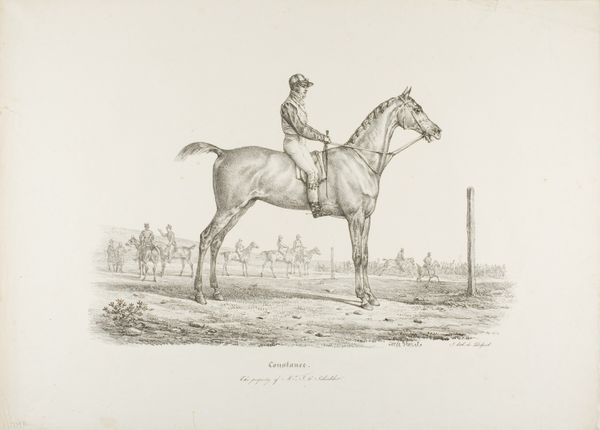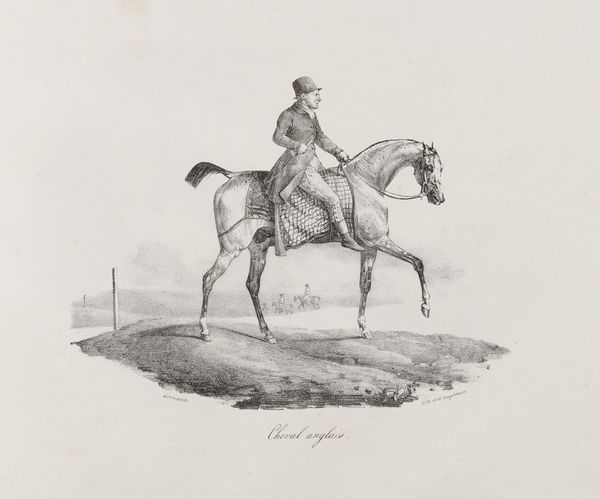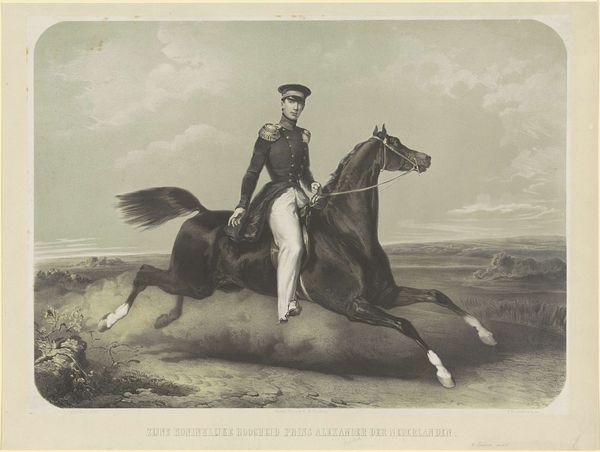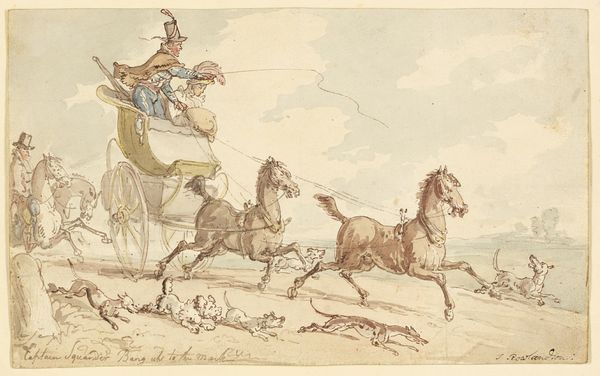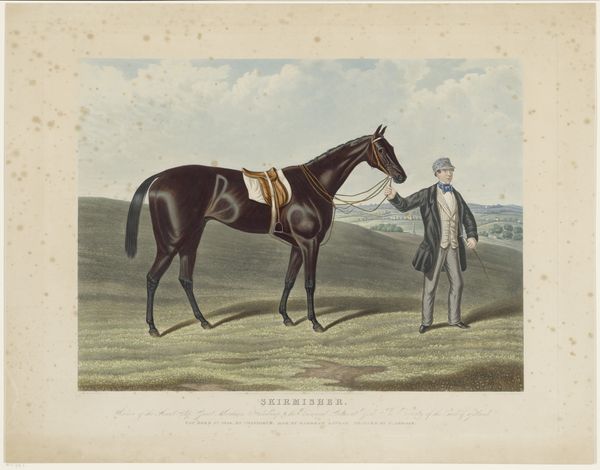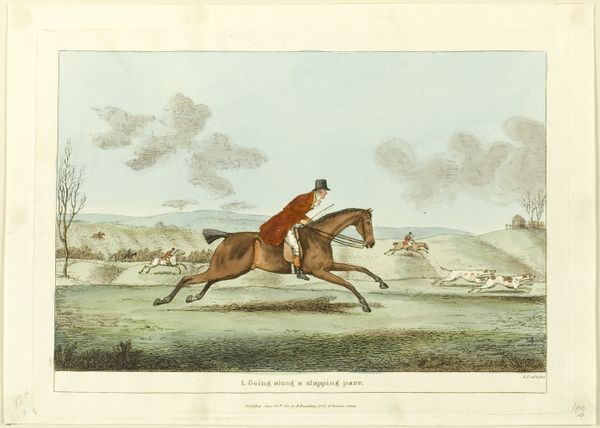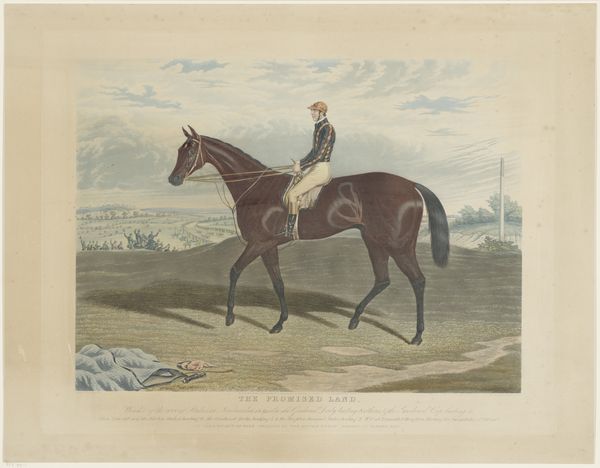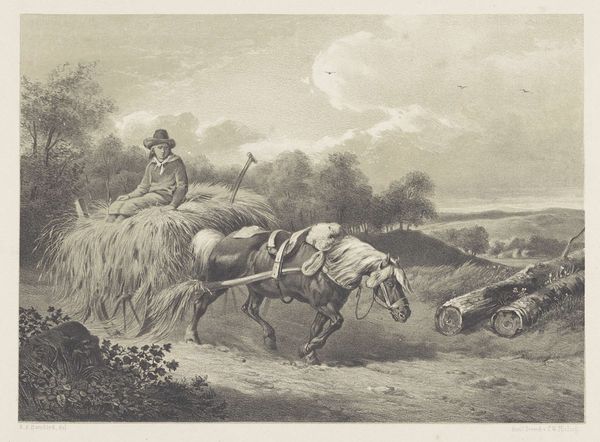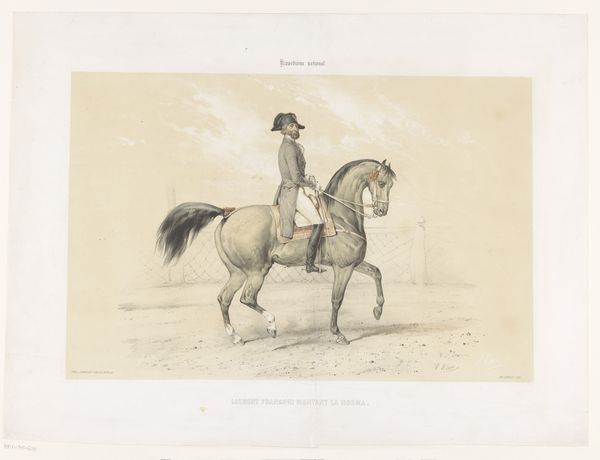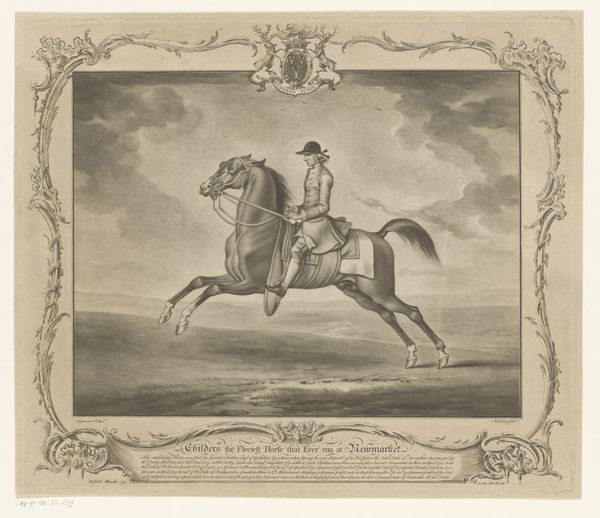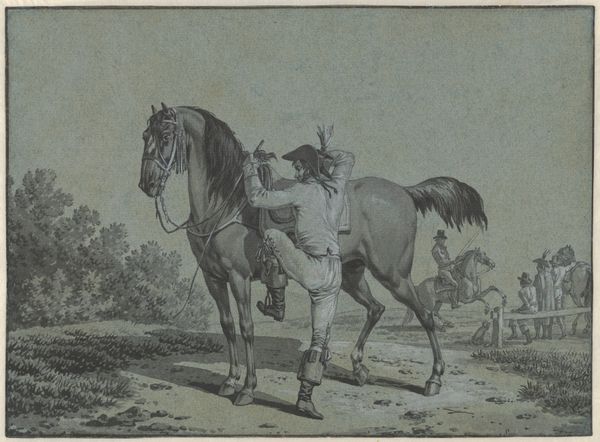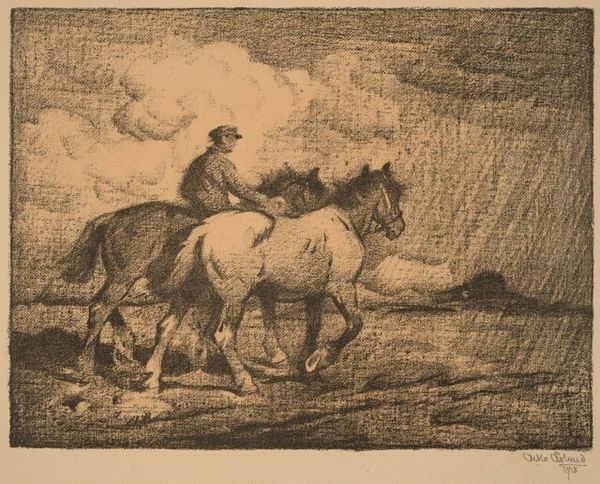
painting, oil-paint
#
animal
#
painting
#
oil-paint
#
landscape
#
oil painting
#
romanticism
#
animal portrait
#
horse
Copyright: Public domain
Editor: So, this is James Ward's "Hambletonian' Beating 'Diamond'," an oil painting from 1819. It strikes me as a curious combination of dynamism and stillness. The horses are clearly in motion, yet the landscape feels oddly static. What do you see in this piece, looking at it from your perspective? Curator: Primarily, I observe the meticulous attention to form. Consider the sinuous lines defining the horses' musculature, juxtaposed with the geometric regularity of the buildings in the background. How does this formal contrast influence your reading of the work? Editor: I guess it makes the horses the focal point and also emphasizes their power compared to the architecture in the background. Is the light also relevant here? The light is so flat and seems to unify all of the space. Curator: Precisely. The uniformity of light flattens the picture plane, emphasizing the surface and denying deep recession. Note also how the color palette, limited primarily to earth tones and muted blues, contributes to this effect, reducing any dramatic or artificial contrasts. How would you describe the relationship between form and content here? Editor: The emphasis on form, the anatomical correctness of the horses and geometry of the architecture. So does that mean the content is perhaps secondary to Ward's technical and artistic presentation? Curator: Perhaps "secondary" is too strong, however it might suggest a certain commentary. Consider the interplay between the organic, fluid forms of nature—the horses, the landscape—and the rational, constructed forms of human artifice. What commentary might this suggest? Editor: Wow, looking at it this way, this ordinary horse race feels like the product of so much attention to detail, and form versus function! Thanks for making that visible to me. Curator: Indeed. A formalist approach compels us to engage closely with the artwork, prompting us to perceive it afresh and discover fresh approaches of art and aesthetic experience.
Comments
No comments
Be the first to comment and join the conversation on the ultimate creative platform.
